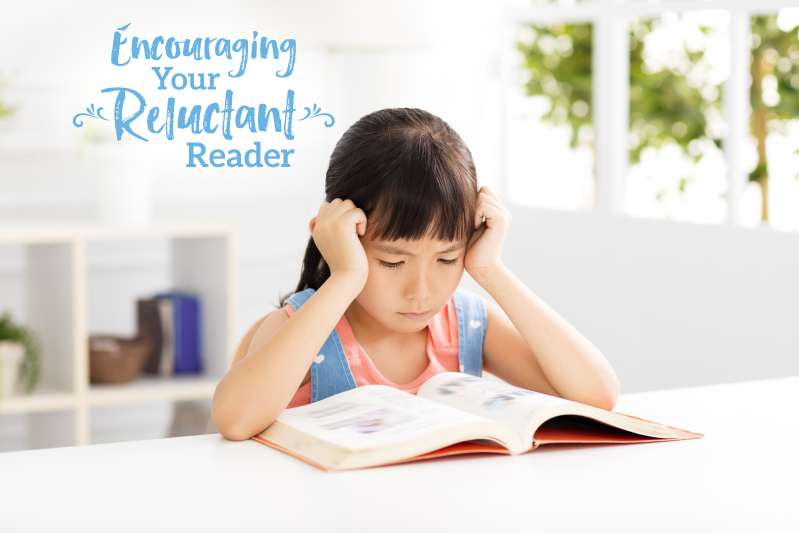
While you’d like your son or daughter to disappear into the land of Narnia or be swept up in a Harry Potter spell while reading, the reality may be the opposite of this for your child. In fact, they might even say they hate reading and when they finally sit down with a book, you hear cries of, “Am I done yet?” or “How many more pages?” every few minutes.
But where does this reluctance come from? Has your child not found the type of books they can get excited about? Are they getting frustrated because they have to sound out every word? Are they a fluent reader who struggles to comprehend what they’ve read? Understanding the root of your reader’s reluctance is the first step in trying to find the best way to help them.
Explore Their Interests — via Books!
Thanks to inter-library loans and websites like Amazon and Scholastic, there are more books than ever available. Tap into your son or daughter’s interests when searching for new options. Animals, Minecraft, Star Wars, My Little Pony – make reading more fun by providing your child with a high-interest topic. Connect a field trip to the aquarium with a book about sharks or find a book about Florida before heading to Disney World.
Create a Positive Reading Atmosphere
Establish a time for quiet reading in your household as something to look forward to and enjoy! If your reluctant reader sees you reading, he or she is less likely to see reading as a punishment or something negative. Stepping away from TV time or iPad games as a family eliminates distractions and can allow your child to see reading as something enjoyable.
Try Audiobooks and Read-Alouds
Allow your child to be exposed to text in different ways: have a read aloud or listen to an audiobook. Hearing a fun, exciting story may motivate your child to seek out a book on their own. After you read or listen to a story, you can gauge your student’s comprehension by asking some imagery questions. Things like, “How did you see that happening?” or “What do you picture happening next?” can begin a fun discussion of the story and allow you to see what your child is getting out of it.
Eliminate the Possibility of a Reading Weakness
No matter how many fun and exciting books your child is exposed to, reading may continue to be a source of strife if he or she has a decoding weakness. Having to sound out the same word every time it appears, slow reading, and difficulty differentiating the letters and sounds within words are all signs of a reading weakness. These challenges may be tied to your child’s symbol imagery, which is the ability to create mental imagery for sounds and letters. Having symbol imagery that’s in-tact is essential for being able to decode new words, maintain sight words and become an independent, fluent reader.
Learn more about reading difficulty and solutions here.
Tackle Reading Comprehension Head-On
Being a fluent reader doesn’t guarantee strong reading comprehension. Your child may not be making a “movie in their mind” while they read, which allows comprehension to happen. Concept imagery is the ability to create an imagined gestalt — or whole — from language. Listening to audiobooks or being read to won’t necessarily make comprehension any easier for a student who has a concept imagery weakness. Learn about the imagery-language connection for reading here.
If you have concerns about your child’s reading or comprehension, please get in touch with your local the learning center, 800.300.1818.





